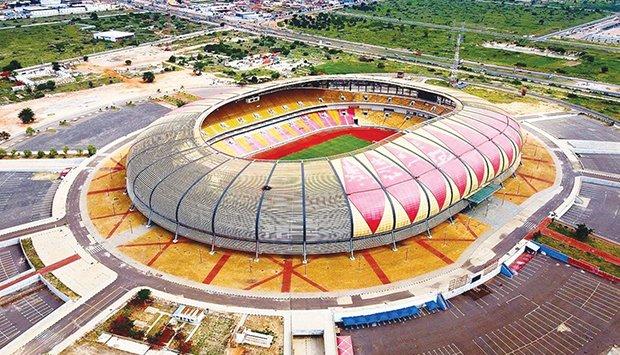Africa-Press – Angola. Angola has registered “robust” growth in sports infrastructures, in the last 20 years of peace, in an escalation of ascension not always based on the principles of sustainable development.
With the end of the war and the signing of the peace accords, on 4 April 2002, infrastructures were created to support football, basketball, handball and roller hockey, although in many cases the deficient ability to manage these assets.
These are multipurpose venues (pavilions and stadiums) that have entailed high costs for the Angolan State, whose use does not always comply with the principles of good management and sports massification.
Just to clarify, Angola saw the birth, in these 20 years of peace and national reconciliation, four modern stadiums to support CAN 2010, some of them already in poor technical condition and almost without regular use.
The 11 de Novembro Stadium, in Luanda, with a capacity for 50 thousand spectators, is the main exponent of this Angolan State programme.
In addition to the “giant”, built in the Camama area, the country can be proud of the appearance of Ombaka stadiums, 35 thousand spectators, in Benguela province, Chiazi, 20 thousand, in Cabinda, and Tundavala, 20 thousand, in Lubango (Huila).
To these are added the Kilamba multipurpose pavilion, with a capacity for 12,720 people, built in Luanda to host the Roller Hockey World Championship (2013).
The benefits of peace have allowed Angola to further assert itself as a nation of sport, on the African continent and in the world. The organization of the 27th edition of CAN 2010 contributed greatly to this.
It was in 2008, six years after the establishment of peace, that Angola took over, in Accra, Ghana, the organization of this African Cup of Nations.
The CAN provided high investments in stadiums that resulted in the event’s success and benefits for the population, given the increase in jobs in the areas of Civil Construction, Hospitality and Tourism.
The Roller Hockey World Championship, the African Basketball and Football Championships for amputees and, more recently, the African Ju-Jitsu Championship, cement the thesis of a new sporting Angola in the context of nations.
The organization of Afrobasket 2007 led to the construction of four multipurpose pavilions, in the provinces of Cabinda, Benguela and Huíla, which turned out to be an “oxygen balloon” for sport, in general, and for the modality, in particular.
However, the buildings built in the country, within the scope of international events, are struggling with serious problems of management and maintenance, witnessing, with sadness, their degradation.
The outsourcing of these spaces, as is the rule in several parts of the world, takes a long time to be implemented and, as a result, they end up not being fully exploited.
However, despite all the investment in this field, there is a clear need to intervene in other venues in the country, some of which are historic, such as Cidadela Desportiva and Campo do São Paulo, whose technical condition has been criticized by several sports agents.
In the specific case of the Cidadela National Stadium, it is practically deactivated, because of cracks in the stands of the second ring, making it a “monster” practically abandoned in Luanda. However, if in the area of infrastructure the gains are considerable , paradoxically, Angola regressed in numbers, despite the maintenance of hegemony in Africa in women’s handball (with 14 titles), men’s basketball (11), in the modalities of wrestling, chess, swimming, sailing, shooting and adapted sports.
For More News And Analysis About Angola Follow Africa-Press






